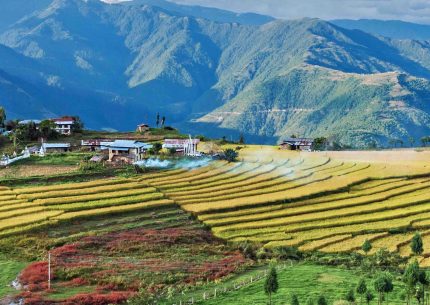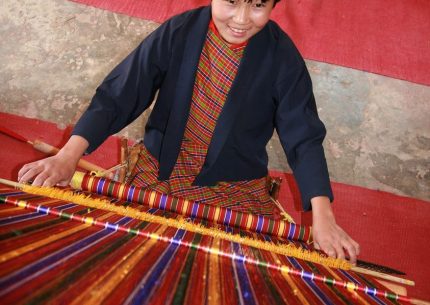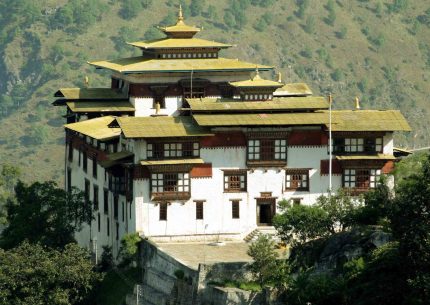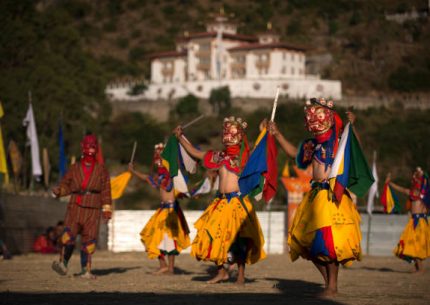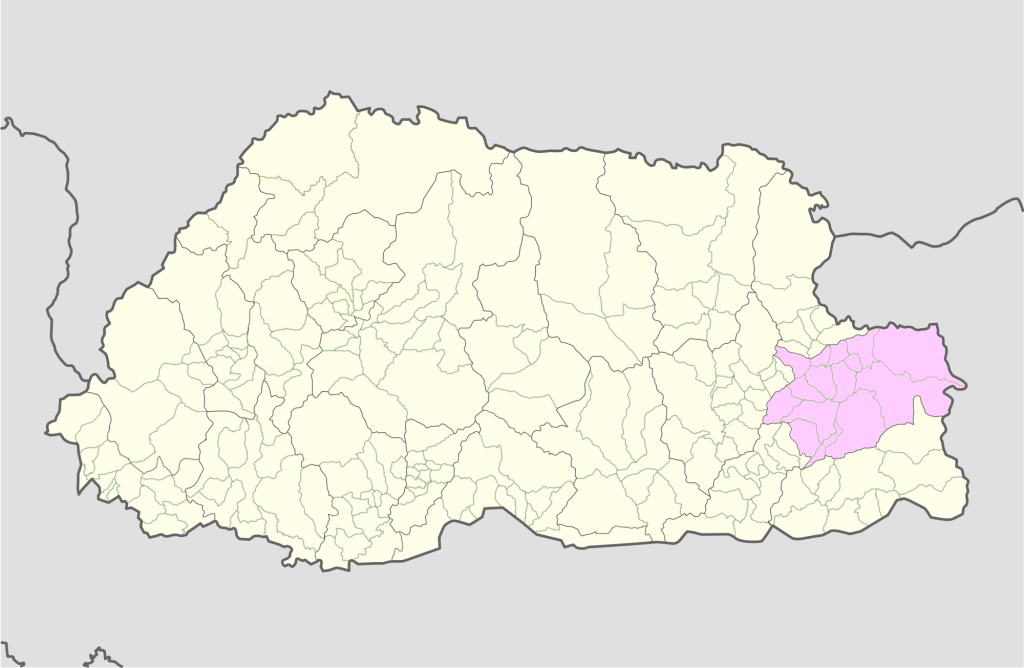
Trashigang is one of the largest districts in Bhutan. It is located in the easternmost corner of the country, and almost touches the state of Arunachal Pradesh in India. Like all the other districts in Bhutan, it boasts a beautiful landscape which is characterised with differences in altitude which vary from 600m to 4000m.
Coincidentally, and what also makes for an interesting fact, is that the largest district in the country is home to the largest river in the country, Dangme Chhu. The main town itself enjoys a comfortable location, located as it is on a hillside. During ancient times, it was an important place for trade and commerce for merchants looking to buy and sell their goods in Tibet. The marketplace is also frequented by semi-nomadic people belonging to Merak and Sakteng. They are easily identifiable by their unique way of dressing, which is markedly different from the regular Gho and Kira, the traditional dress of Bhutan.
Among the many tourist attractions in Trashigang is Trashigang Dzong, also known as the Dzongs of Eastern Bhutan. The citizens fondly refer to it as the Fortress of the Auspicious Hill. Built in 1659 by the fourth Rinpoche Mingyur Dempa to protect the region from Tibetan invaders, it is a magnificent structure to come across. Quite massive by its proportions, it rests gently on a cliff like structure which overlooks River Dangme Chu. Just like many of the structures in Bhutan, this one is also related with an interesting legend. One of such legends state that a Tibetan invader, upon seeing the dzong the first time, remarked that it was not present on the ground and that it was a “sky dzong”.
If you plan a Bhutan tour in the month of December, then don’t forget to attend the Trashigang Tshechu. Held according to the 10th month of the Lunar calendar, it is one of the biggest festivals in eastern Bhutan. During the course of the festival, various kinds of mask dances called chaam, which are popular all over Bhutan, are performed. These are accompanied by traditional folk dances and songs. The highlight of Trashigang Tshechu is the revealing of thongdrel (large tapestry) of Guru Tshengyed (regarded as the eight manifestation of Guru Rinpoche).
You don’t need many reasons for planning a visit to Trashigang on your Bhutan sightseeing tour. Even then, here is one more. It is home to the Sakteng Wildlife Sanctuary, which falls under one of the “ten protected areas of Bhutan”. This wildlife sanctuary was created in order to protect the migoi, a type of Yeti whose existence the Bhutanese people believe in but which has not been scientifically proven yet. It is connected to another sanctuary called Khaling Wildlife Sanctuary through a biological corridor. There are many bird species like blacked rumped magpie and eastern blue pine which are found in this sanctuary. The Sakteng Wildlife Sanctuary is included among the protected areas of Bhutan. Visiting this sanctuary promises to be a wonderful experience.

